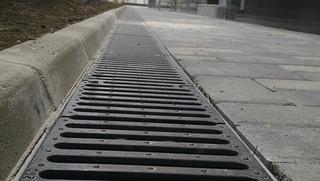Gully Sucking FAQ
Gully sucking isn't fun, it's not glamorous and it's very easy to ignore. For that reason, gully maintenance is one of those jobs that really is better planned and executed regularly. By someone else if possible! We have put together an FAQ around gully sucking with the answers to those questions below. Let us know on the form below if you think we've missed anything, and maybe we can update the FAQ to accommodate your questions too.

Gully sucking, also known as vacuum gully cleaning, is a method of cleaning and maintaining drainage systems on public roads, and private cul-de-sacs. It involves using a powerful vacuum system to remove debris, silt, and accumulated waste from gullies and the drains between the gullies.
The vacuum suction equipment collects the materials into a tanker for later disposal.
A road gully is a small trap. Road gullies collect surface water from roads and transport it through drainage systems, where it's then taken to a watercourse, storm drain or soakaway.
Proactively before the sludge in the gully (that has been trapped) overflows into the drains is the less disruptive or prudent method.
Gully sucking is mainly considered reactively, obviously a little late, when you notice blockages or reduced drainage efficiency. This includes slow drainage, unpleasant odours, or water pooling around gullies.
Regular maintenance is best scheduled to prevent issues. During the autumn, or when the leaves have been damaged, after a very hot day. Regular tree and shrubbery leaf gathering is really helpful
Yes, various types of gully-sucking equipment are available, units for residential and we use larger truck-mounted systems for commercial and municipal applications. The choice of equipment depends on the scale and specific cleaning job requirements.
The best method is to be very vigilant, and as mentioned above, leaves falling unexpectedly, because of a hot day, as mentioned, or builders working on a building, sand and ballast getting into the road gullies, trees are good for the environment, but more maintenance and regular maintenance is required on road gullies if lots of trees or large trees are present.
The frequency of gully sucking for residential properties can vary based on factors like local climate, and vegetation, Typically, it's recommended to schedule gully cleaning annually or biannually as part of routine maintenance.
Yes, gully sucking is generally considered eco-friendly because it doesn't involve harsh chemicals. It relies on vacuum power to remove debris, reducing the environmental impact compared to chemical-based drain cleaning methods.
Yes, regular gully sucking helps prevent drain blockages and backups by removing debris, silt, leaf mulch, that can accumulate over time. It maintains the proper flow of water through the drainage system.
Before gully sucking, ensure that any access points are clear and accessible. After the service, it's a good practice to monitor the drainage system for improved performance and address any remaining issues promptly.
The cost varies depending on the scope of work, the equipment used, and the service provider. It's best to request quotes from our local gully-sucking specialists for accurate pricing.
Alternative methods include removing soil and mulch via posthole tools. Some methods push the mulch or soil into the drains, causing further problems.
Drain rodding, high-pressure water jetting, and chemical treatments. High-pressure jetting should only be carried out whilst the tanker is sucking dislodge, soil and mulch.
However, gully sucking is often preferred for its efficiency and minimal environmental impact. The choice depends on the specific needs of the drainage system.
If you'd like to get a maintenance plan in place for your drainage, give us a call.
BOOK A ROUTINE VISIT QUICK HELP, IT'S AN EMERGENCY!

